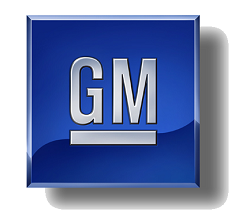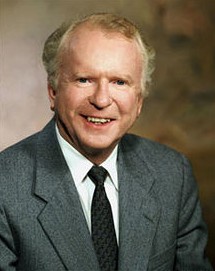 At the beginning of 2015 there are more important new developments in the payments industry than at any time since the inception of Electronic Ticket Capture. It’s boiling over with venture capital. A lot of money has been invested, and lot more waits on the sidelines to be deployed for the Next Big Thing.
At the beginning of 2015 there are more important new developments in the payments industry than at any time since the inception of Electronic Ticket Capture. It’s boiling over with venture capital. A lot of money has been invested, and lot more waits on the sidelines to be deployed for the Next Big Thing.
Your customers are confused, but you can’t be, so when wondering how you should spend your time and how you will bring value to your merchants, we can learn a lot from what happened to General Motors.
First, the Lay of the Land
Let’s begin by looking at the confusion.
First, you saw data breaches and hundreds of millions of cards compromised by hackers at major retailers.
Second, there has been a proliferation of in-app payments.
Third, mobile payments and digital wallets, non-starters up to now, seem to be gaining momentum.
Fourth, entrepreneurs are talking about the “merchant operating system of the future,” which might include cloud-based, tablet, POS solutions.
Fifth, there is the germination of changes in B2B payments, which are currently almost entirely check based.
Sixth, people are talking about the “Internet of things,” where your refrigerator will discover that you are low on milk and eggs and go ahead and order for you.
Seventh, a variety of non-traditional, alternative lending sources are giving credit to both consumers and businesses.
Eighth, very large merchants are looking for interchange relief and other platforms that are less expensive than traditional credit card programs.
Ninth, there is the Bitcoin phenomenon, which I refer to as a “speculative commodity,” but it is generating a lot of attention to be sure.
Now, About General Motors…
 Whew, that’s a lot to keep up with! If you work in the payments system, your clients are undoubtedly asking you for advice about what to do.
Whew, that’s a lot to keep up with! If you work in the payments system, your clients are undoubtedly asking you for advice about what to do.
We know from experience that not every new idea is going to be implemented on a widespread basis. But we have other experiences that can help us find our way.
As a car collector, I like to look at things through the lens of the automobile industry, one of our core businesses here at CrossCheck.
Few companies have lived through such an intense experience of changing their business model to adapt to a new environment as General Motors. In 1979, GM had a 47% share of the US auto market – but within ten years that dropped to 34.7%.
In 2014, it was less than 18%.
How and why did this happen? I don’t have all the answers, but there are two people who have most of them: Bob Lutz, retired GM Vice Chairman, and MaryAnn Keller, a research analyst considered to be at the top of her game. Both have written books about the GM debacle – recommended reading.
Similar to GM, MasterCard and Visa have had the same business model for decades, and currently they control 90% of their market. But after years of supporting the magnetic stripe (way beyond its useful life), the hacking attacks forced them to recognize the vital importance of addressing its shortcomings now.
Your merchants confront the adoption of EMV, encryption, tokenization, biometric authentication, and device fingerprinting. They will have to replace their terminals to accommodate chip and signature, and while they’re at it, they want to address the whole question of NFC (previously known as “Not For Commerce”) which was given a defibrillator-like jump- start by ApplePay.
Everything needs to change. But very little has changed.
GM had the same experience: five divisions built similar cars using rear wheel drive, big carbureted motors with body-on-frame technology.
They made incremental improvements to the drive train and emphasized each model year’s styling and flash to differentiate their offerings. They competed on branding, styling, and features – and to their credit this model worked great for fifty years.
Then came the first Arab oil crisis in 1974. Everything changed. In 1975 GM decided to manufacture cars with a unibody structure and front wheel drive, with the goal of maximizing efficiency.
And it wasn’t just the price of oil that changed. Until the 1970s design was totally unconstrained. Now there was the EPA and NTHSA to contend with, continually issuing and mandating new mileage and safety standards, and targeting GM because it was the most visible target. It became a scramble just to keep up technologically.
Then came the second oil crisis in 1980. It caused a paradigm shift: efficiency became the benchmark, and changed the public’s perception of what a car should look like. Building front-wheel drive unibody cars costs a lot of money, and it is not easy to differentiate cars on this platform. GM’s rush to market brought flawed offerings, such as the Vega, the Citation, the V8-6-4 motor and diesel conversions from regular motors. (This isn’t to say that GM didn’t build some pretty nice cars; I have a Buick station wagon with the Corvette LT1 motor which I will never sell. It’s not only fast, but it holds a full sheet of plywood!)
Making matters worse, Roger Smith, GM’s Chairman from 1980-1990, reorganized the company to centralize power away from the divisions, previously the font of creativity, and wasted money on extraneous projects. Ross Perot once commented that GM could have bought Toyota outright with just the money that Smith wasted on other activities.
Somebody once said that GM was so big that it could make serious missteps for ten years and it would be another ten years before anyone took notice, and that appears to be what happened from 1975-1985. Smith pushed aside issues such as dealing with the UAW, poisonous relations with dealers, too many brands and distribution channels, and unappealing, poor quality products.
When their decade was up, all this caught up with them; people who bought a Vega or Citation had a very bad experience, and they did two things: they told their friends, and they vowed to never buy a GM vehicle again!
In retrospect, it is easy to see that if GM had spent their budget on the fundamentals – building best-in-class, high quality offerings with fewer brands and models -- that wouldn’t have happened.
Lessons To Learn
Right now there’s an assault on the payments industry by thieves and hackers, some of them funded by nation states. Think of it as the counterpart to the first Arab oil crisis that changed GM.
It’s a similar wake-up call, and we need to respond effectively.
In your business, the proliferation of new products and technologies threatens to become the counterpart to GM’s unfocused and poorly executed business development under Smith.
You are tempted to provide a full range of solutions to your merchants, but keep this in mind:
- Consumers will do what they think is best and easiest for them, not for the merchant
- Merchants do not want to spend money buying new equipment when their existing equipment works just fine
- Up to now, consumers have shown little interest in digital wallets or paying with their phone
- The millennial generation is using credit less, and overall credit card usage is down
When Roger Smith took the reins at General Motors, it was a period of great change, just like we are experiencing today.
Unfortunately, instead of concentrating on the customer, he squandered the company coffers on buying Electronic Data Systems from Ross Perot, and then buying Hughes Aircraft. In his first 5 years, he spent no less than $42 billion to automate the factories, which turned out badly as the robots malfunctioned and painted each other instead of the cars. He drove the company into a mountain of debt that nearly killed it.
Today, it is tempting for payment industry professionals to spend time and money on each new innovation. But this might be making the same mistake Smith made.
If we learn from his errors, then we focus on quality and we focus on the customer.
The best thing you can do as a payment professional is to help your merchants make every sale that they can, and not lose a sale for any reason that you could fix.
When it comes to car dealer and auto aftermarket merchants, this means offering check guarantee.
Why? The numbers tell the story: 85% of financing is done at the dealer, and over 50% of the consumers in the used car market are going to need to make a down payment.
They do this by writing checks! Our internal research indicates that nearly 70% of all new and used car sales involve the customer writing a check.
You can help the dealer by offering CrossCheck remote deposit capture with check guarantee, including the multiple check feature. That way, the dealer can make a sale that he wouldn’t have made without it.
By sticking to the basics and providing value and relevance, you are giving the merchant what they need right now to grow their business.
When you are calling on a car dealer or auto aftermarket merchant, keep your eyes in the sky but your feet on the ground and make sure to give the merchant what they need now!



